#thomas chevalier
Text






Nora & Chevalier 🥺🤍
#mercato#mercato series#mercato edit#nora kader#thomas chevalier#chevalier x nora#nora x chevalier#chevalier and nora#nora and chevalier#noravalier#noras#norvalier#noralier#thoma#french side of tumblr#frenchedit#french serie#french show#french#manon azem#arnaud ducret
9 notes
·
View notes
Text




SAME BUT DIFFERENT 🫠
#HPI#nora kader#morgane alvaro#norvalier#morgadec#thomas chevalier#adam karadec#nora and chevalier#chevalier and nora#nora x chevalier#chevalier x nora#morgane and karadec#karadec and morgane#morgane x karadec#karadec x morgane#mercato serie#mercato#mercato edit#hpi serie#hpi edit#mercato season 1#hpi season 3#morgadecedit#norvalieredit
7 notes
·
View notes
Text



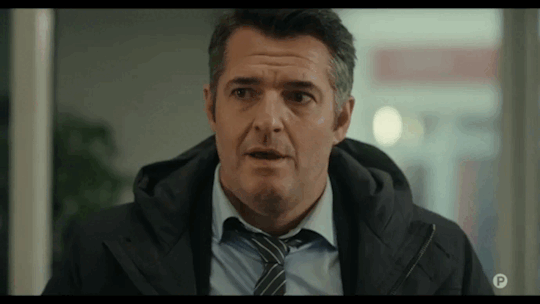
First meeting - More details / Nora x Chevalier - Mercato S01E01
#mercato#nora kader#thomas chevalier#chevalier x nora#french serie#manon azem#mercato series#nora x chevalier#arnaud ducret#french show
3 notes
·
View notes
Photo
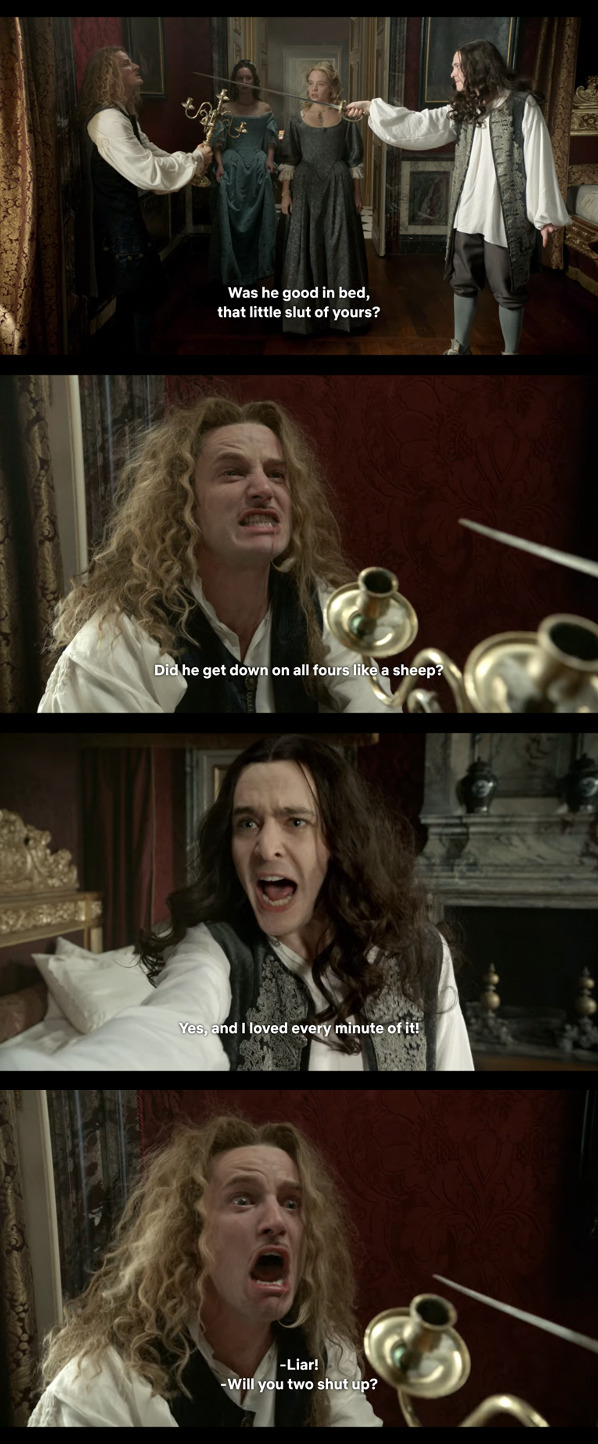

i love insane gay people
#me#versailles 2015#interview with the vampire#iwtv#monchevy#loustat#look i know it's problematic to have philippe and the chevalier be as fucked up and toxic as they are#bc they are the only gay rep on the show and theyre treated like a spectacle compared to all the het pairings#but consider this:#they are the most interesting part of the show#also love the irony that in some ways lestat is more justified here#since philippe didn't actually fuck thomas he's just going along with chev bc he's The Drama#but also#the day before this scene lestat asked for an open relationship#so...in some ways he is not justified at all#i am rotating these bitches in my mind so much
511 notes
·
View notes
Text
I really, really, really dislike Le Morte D'Arthur's version of "Knight of the Cart" very, very much.
It's... honestly, the weakest and flimsiest version of Guinevere's abduction ever.
#le morte d'arthur#thomas malory#arthuriana#arthurian legend#arthurian legends#arthurian mythology#king arthur#queen guinevere#sir lancelot#knight of the cart#chevalier de la charrette#chretien de troyes#maleagant
7 notes
·
View notes
Text
24 Days of La Fayette: December 20th – Louis-Saint-Ange, chevalier Morel de La Colombe
Although it is not any longer December, we are going to finish this series – just a month or two delayed. :-)
Louis-Saint-Ange, chevalier Morel de La Colombe is one of La Fayette’s more prominent aide-de-camps and he was also one of his initial fours aide-de-camps (the other ones being Brice, Virgny and Gimat, all three of them were already covered in posts) and a passenger on La Victoire. Among all of La Fayette’s other aide-de-camps and travel companions, La Colombe had the most interesting motivation. He was not seeking glory, fame or fortune, he was not put at La Fayette’s side by chance or French or American agents. In short, he had no ulterior motives beside being with La Fayette. This is also evident in the agreement between the French adventures and Silas Deane.

Idzerda Stanley J. et al., editors, Lafayette in the Age of the American Revolution: Selected Letters and Papers, 1776–1790, Volume 1, December 7, 1776–March 30, 1778, Cornell University Press, 1977, p. 18.
As we can see, La Colombe only ever desired to be made a Lieutenant, a, comparatively speaking, low rank. La Colombe was born in 1755 in the Auvergne, the same region that La Fayette hailed form and his family could easily rival those of La Fayette’s in terms of influence and means in the area. He was the son of Jean-Claude de La Colombe. The two families were closely connected and La Fayette and La Colombe were friends. In fact, La Fayette considered him the worthiest of his companions and called him his “best friend”. Despite his moderate demands, Congress was not very forthcoming with La Colomb’s commission – nor with that of anyone else, as we all know, even La Fayette had to fight for his commission and even more so for his commission to be taken seriously.
La Colombe was most likely in the group that travelled by water to Charleston and from there to Philadelphia. For the first months after his arrival, very little mind was paid to La Colombe’s case from official side. La Fayette wrote on September 25, 1777 to Henry Laurens:
The bearer of my letter [La Colombe] is a genteleman who came with me upon my assurance that he would be employed. He is of a very good birth, and a sensible young man. He wants only a commission of lieutenant, and General Canaouay is desirous of having him in his brigade. As Congress did not comprehend him in sending back the others I hope that he will be received in our service. Will you be so good to speack about it when you') find some occasions?
Idzerda Stanley J. et al., editors, Lafayette in the Age of the American Revolution: Selected Letters and Papers, 1776–1790, Volume 1, December 7, 1776–March 30, 1778, Cornell University Press, 1977, pp. 110-112.
The Marquis continued to petition Laurens on La Colombe’s behalf and he also wrote to George Washington on October 14, 1777:
among the officers who came on board of my ship, this whom Congress did pay the less regard to, is the very same whom I recommended as the most able and respectable man and my best friend—he was coming only for me (…)
“To George Washington from Major General Lafayette, 14 October 1777,” Founders Online, National Archives, [Original source: The Papers of George Washington, Revolutionary War Series, vol. 11, 19 August 1777 – 25 October 1777, ed. Philander D. Chase and Edward G. Lengel. Charlottesville: University Press of Virginia, 2001, pp. 505–508.] (02/10/2023)
It was around that time that finally some movement in La Colombe’s case could be observed. On September 10, 1777, Congress recognized his rank as a Lieutenant (and his work he had done for La Fayette since his arrival) by paying him 243 Continental Dollar as his pay as a Lieutenant from December 1, 1776 until September 1, 1777. On November 15, 1777 he was commissioned an aide-de-camp to La Fayette with the rank of Captain. La Fayette himself wrote a note of thanks to Henry Laurens on November 29, 1777:
All the letters I receive from frenchmen are full of theyr gratefulness for your own particular kindness towards them. Will you be so good as to accept my thanks for them and for myself, and to join here my sincere ones on account of the appointement of Mr. de Ia Colombe?
Idzerda Stanley J. et al., editors, Lafayette in the Age of the American Revolution: Selected Letters and Papers, 1776–1790, Volume 1, December 7, 1776–March 30, 1778, Cornell University Press, 1977, pp. 160-161.
The next months passed relatively uneventful and La Colombe dutifully continued his service. There was only one more interesting episode during this time when La Colombe was send to negotiate with the Natives. La Fayette wrote to Charles Lee in June 1778:
Mr. de Fai'lly, de La Colombe See. are now going with Gal. MgKintosh, where theyr presence among the indians is of a great Service, but they’ll come again and we must provide for them or such others as may come from France
Idzerda Stanley J. et al., editors, Lafayette in the Age of the American Revolution: Selected Letters and Papers, 1776–1790, Volume 2, April 10, 1778–March 20, 1780, Cornell University Press, 1978, pp. 62-64.
Shortly before La Fayette returned to France for the first time, La Colombe desired to be made a Major and La Fayette was eager to lend a helping hand. He wrote to the President of Congress on January 9, 1779:
May I beg leave to Reccommend Mr. de La Colombe who desires to sollicit the commission of Major.
Idzerda Stanley J. et al., editors, Lafayette in the Age of the American Revolution: Selected Letters and Papers, 1776–1790, Volume 2, April 10, 1778–March 20, 1780, Cornell University Press, 1978, pp. 220-222.
At first, La Colombe’s prospects seemed very good, the Committee for Foreign Applications was in favour of his promotion but he eventually failed to gain the nine votes in the Continental Congress required. Very interesting in this context are two letters between Alexander Hamilton and John Jay, whom, as President of Congress, La Fayette had previously petitioned. Jay wrote on September 18, 1779:
The Board of War are charged with Chevalier de Colombes affair, and will probably report in his favor; for my own Part I have ever been averse to giving Brevets except in very particular Cases; it cheapens us.
“To Alexander Hamilton from John Jay, 18 September 1779,” Founders Online, National Archives, [Original source: The Papers of Alexander Hamilton, vol. 2, 1779–1781, ed. Harold C. Syrett. New York: Columbia University Press, 1961, pp. 182–183.] (02/10/2023)
Hamilton replied on September 29, 1779:
I shall not be sorry if Colombe fails in his application. My sentiments correspond with yours on the operation of brevets; but we began wrong and the transition must be gradual.
“From Alexander Hamilton to John Jay, [29 September 1779],” Founders Online, National Archives, [Original source: The Papers of Alexander Hamilton, vol. 2, 1779–1781, ed. Harold C. Syrett. New York: Columbia University Press, 1961, pp. 189–192.] (02/10/2023)
In the meantime, La Fayette had returned to France and believed that several of his aides, La Colombe among them, would follow shortly after. He wrote to the Comte de Vergennes on May 23, 1779:
Any day I expect three Americans and a Frenchman who would be of the greatest use to us, and I enclose their names so that M. de Sartine may send word to all the ports to urge them, upon their arrival, to come and see me at Saintes.
Idzerda Stanley J. et al., editors, Lafayette in the Age of the American Revolution: Selected Letters and Papers, 1776–1790, Volume 2, April 10, 1778–March 20, 1780, Cornell University Press, 1978, pp. 268-269.
When the party did not arrive for several more weeks, La Fayette started to assume the worst. He wrote to George Washington on June 12, 1779:
I don't know what is Become of Cle[l]. Nevill and the Cher, de La Colombe. I beg you would make some inquiries for them, and do any thing in your power for theyr speedy exchange in case they have been taken.
Idzerda Stanley J. et al., editors, Lafayette in the Age of the American Revolution: Selected Letters and Papers, 1776–1790, Volume 2, April 10, 1778–March 20, 1780, Cornell University Press, 1978, pp. 276-281.
In the end, the matter was not quite that dramatic and as it turned out, La Colombe and the others had never intended to immediately follow La Fayette. La Colombe in fact was transferred to the staff of the Baron de Kalb and served him as an aide-de-camp for some time. He eventually left Boston for France on November 15, 1779 onboard the French Frigate La Sensible, the same ship that also carried John Adams and John Quincy Adams. La Colombe and John Qunicy Adams would indeed meet again later in life. On July 8, 1794, John Quincy Adams wrote to his mother Abigail Admas:
I have likewise seen a Mr: Colomb, an aid to Mr De la Fayette; who went to Europe in 1779 with us on board the Sensible. “tempora mutantur et nos mutamur in illis.” Mr: Colomb and I sat and conversed very sociably together for half an hour before either of us discovered that we had been formerly acquainted, and fellow passengers.
“John Quincy Adams to Abigail Adams, 8 July 1794,” Founders Online, National Archives, [Original source: The Adams Papers, Adams Family Correspondence, vol. 10, January 1794 – June 1795, ed. Margaret A. Hogan, C. James Taylor, Sara Martin, Hobson Woodward, Sara B. Sikes, Gregg L. Lint, and Sara Georgini. Cambridge, MA: Harvard University Press, 2011, p. 207.] (02/10/2023)
But back to the topic at hand. Washington wrote to La Fayette on September 30, 1779:
You enquire after Monsr. de la Colombe, & Colo. Neville; the first (who has been with Baron de Kalb) left this a few days ago as I have already observed for Phila., in expectation of a passage with Monsr. Gerard.
Idzerda Stanley J. et al., editors, Lafayette in the Age of the American Revolution: Selected Letters and Papers, 1776–1790, Volume 2, April 10, 1778–March 20, 1780, Cornell University Press, 1978, pp. 313-319.
De Kalb wrote on October 15, 1779 to John Adams:
The Chevr. de la Colombe having been in Marquess de la Fayette’s family while he Staid in our army, and a Supernumerary aid de Camp to me this Campaign, But his father desiring him to come home, I request the Favour of you to admit as a Passenger into the Same Frigate you are to Sail in.
“To John Adams from Johann Kalb, 15 October 1779,” Founders Online, National Archives, [Original source: The Adams Papers, Papers of John Adams, vol. 8, March 1779 – February 1780, ed. Gregg L. Lint, Robert J. Taylor, Richard Alan Reyerson, Celeste Walker, and Joanna M. Revelas. Cambridge, MA: Harvard University Press, 1989, pp. 202–203.] (02/10/2023)
While in France, La Colombe transferred back to the French Forces under General Rochambeau. In the spring of 1780 and with the help of La Fayette, La Colombe was made a Captain in the King’s Dragoons. He returned to America in early September of 1780 onboard the Alliance and participated in the battle at Yorktown. After Yorktown, he returned to France with La Fayette where he retired from the King’s Dragoons in 1783.
By March 9, 1784, La Fayette included La Colombe’s name in an enclosed list of “Names of the American officers wearing now in France the badge of the society of the Cincinnati” in a letter to George Washington.
After the onset of the French Revolution, he again entered the military and became the colonel of an infantry regiment in 1791 before he once more took up working as La Fayette’s aide-de-camp in 1792. La Fayette’s wife Adrienne wrote on January 14, 1790:
The Chr de la Colombe who has had the honour of serving under your orders, and whose patriotism and sentiments for Mr De la Fayette have rendered eminent services to our cause as well in his province as in the parisien Army, in which he is Aid-Major, having known that I had the honour of writing to you wishes that I offer to you his best respects.
“To George Washington from the Marquise de Lafayette, 14 January 1790,” Founders Online, National Archives, [Original source: The Papers of George Washington, Presidential Series, vol. 4, 8 September 1789 – 15 January 1790, ed. Dorothy Twohig. Charlottesville: University Press of Virginia, 1993, pp. 571–574.] (02/10/2023)
When La Fayette tried to leave France for America during the French Revolution, La Colombe was by his side and arrested along with him. While La Fayette would have to endure imprisonment for several years, La Colombe quickly regained his freedom. William Short wrote to Thomas Jefferson on October 19, 1792:
M. de la Colombe, aide de camp to the Marquis de la fayette, and stopped with him, has made his escape from the citadel of Antwerp—he wrote to me from Rotterdam to know whether he would be safe in this country—I did not suppose he would be if demanded by the Austrian government and gave him that opinion—he proceeded in consequence without delay to England.
“To Thomas Jefferson from William Short, 19 October 1792,” Founders Online, National Archives, [Original source: The Papers of Thomas Jefferson, vol. 24, 1 June–31 December 1792, ed. John Catanzariti. Princeton: Princeton University Press, 1990, pp. 502–504.] (02/10/2023)
I have seen some editors mention that La Colombe was imprisoned with La Fayette in Olmütz but that can hardly be, given the timing of events. There was a considerable back and forth between Alexander Hamilton, Thomas Pinckney (U.S. minister at London) and Edmund Randolph (Secretary of State) about some possible funds for La Colombe and the practicability of him coming to America. He eventually settled in Philadelphia in 1794 where he became a member of the Philadelphia mercantile firm of La Colombe Cadignan & Company, located at 97 South Water Street.
Once safe in America, La Colome started writing letters to garner support and practical aide for La Fayette.
Edmund Randolph wrote to George Washington on May 15, 1794:
If I do not mistake the hints from Mr Lacolombe, these letters are submitted to you, in order to interest you in making, or causing to be made, a demand of M. La Fayette, as a citizen of the United States. I presume, however, that the step, which you have already taken, will be found to be a satisfactory tribute of personal affection, and, altho’ not more than public duty warranted, yet as much, as actual circumstances will permit.
“To George Washington from Edmund Randolph, 15 May 1794,” Founders Online, National Archives, [Original source: The Papers of George Washington, Presidential Series, vol. 16, 1 May–30 September 1794, ed. David R. Hoth and Carol S. Ebel. Charlottesville: University of Virginia Press, 2011, pp. 76–77.] (02/10/2023)
Several of the letters mentioned in the excerpt above were in fact addressed to La Colombe. When La Fayette’s son Georges came to America in the company of Felix Frestel, he likely stayed some time with La Colombe in Philadelphia – in any case, the two of them met. On November 21, 1797 La Colombe wrote to Washington, after having stayed at Mount Vernon in October of the same year:
I take the liberty of presenting you with a short abstract of a letter that may afford you a proof that the man for whose wellfare you have allways had the warmest interest in, General De Lafayette has at last obtained his liberty—as is ascertained by an official note from his Imperial Majesty’s minister, M. ⟨Biro⟩ resident at Hambourg, to a friend of mine Mr Masson formerly his aid du Camp.
“Hambourg 19th Septemr—I have the honor to let you know Sir, that I have received at this moment the official note—an order has been sent from Vienna to Olmutz to set at liberty instantly M. De Lafayette & the other Prisoners.” Several other letters that I have received from Hambourg, and from a particular Correspondent at Olmutz leave me no reason of doubt on this subject—I’m also particularly inform’d that the General & the other gentlemen that were in confinement with him were on the road to Dre[s]den and in all probability would arrive there about the 18th Septemr last, and from thence they were to proceed to Hambourg
“To George Washington from Louis La Colombe, 21 November 1797,” Founders Online, National Archives, [Original source: The Papers of George Washington, Retirement Series, vol. 1, 4 March 1797 – 30 December 1797, ed. W. W. Abbot. Charlottesville: University Press of Virginia, 1998, pp. 479–480.] (02/10/2023)
After helping with the travelling arrangements of Georges, he wrote January 5, 1798:
I have had news of all my Esteem’d friends who were confined in the austrian Bastilles. (…) I am happy sir, to have the honor of forwarding to you the enclosed letter from our mutual Friend Genl De Lafayette whose greatest happiness I’m well assured, was to avail himself the pleasure to write you on the first moment of enjoying his liberty—I took the liberty of sending him a Copy of your letter to me of 3d Decr last, It will be pleasing to him as it may afford a renewed proof of the Paternal sentiments you have for him (…)
“To George Washington from Louis La Colombe, 5 January 1798,” Founders Online, National Archives, [Original source: The Papers of George Washington, Retirement Series, vol. 2, 2 January 1798 – 15 September 1798, ed. W. W. Abbot. Charlottesville: University Press of Virginia, 1998, p. 4.] (02/10/2023)
La Colombe died in America around 1800, the exact date is unknown. With the exception of one short trip, he had never returned to France, nor did he ever see La Fayette again.
#24 days of la fayette#la fayette's aide de camps#marquis de lafayette#la fayette#louis-saint-ange chevalier morel de la colombe#la colombe#adrienne de lafayette#adrienne de noailles#alexander hamilton#george washington#georges de lafayette#william short#john adams#john quincy adams#abigail adams#henry laurens#edmund randolph#thomas jefferson#silas deane#comte de vergennes#founders online#american revolution#american history#french history#french revolution#history#1755#1776#1777#1778
14 notes
·
View notes
Text
'Popular responses to Christopher Nolan’s latest cinematic offering, Oppenheimer, have generally been positive, with the film generating unexpected commercial success given its length and subject matter. However, audience opinion has been polarized regarding the film’s political implications, bifurcating in accordance with the lines along which people have interpreted its ideological content. Some have read Oppenheimer as an indictment of its titular character, typically praising the film for not shying away from the physicist’s personal shortcomings (like his arrogance or infidelity) or attempting to justify them.
For them, the film also shows Robert’s complicity in the most devastating war crime ever committed by foregrounding such details as his justification for continuing the Manhattan Project post-Hitler’s suicide and his refusal to sign Leo Szilard’s petition against dropping the bombs on Japan. Another strand of popular discourse, however, has gone the other way and accused Nolan of whitewashing the image of J. Robert Oppenheimer by de-emphasizing the horrific outcomes of his actions (such as by keeping the harrowing images of Hiroshima and Nagasaki offscreen) and portraying him as skeptical when it comes to atomic weaponry by glossing over his moral culpability in making them possible.
For this latter camp, the film’s decision to utilize Oppenheimer’s victimization at the hands of the Gray board as a framing device to bookend the narrative meant a shift in perspective from ‘Oppenheimer as perpetrator’ to ‘Oppenheimer as victim.’ For still others, the film has seemed to be a balancing act between these two contradictory tendencies, with the criticism and the sympathy canceling each other out to varying effect: for some, a fair representation of a complicated historical figure, while for others, a politically-toothless blockbuster looking to cover all bases.
Despite the differences between these positions, the common axis around which they revolve concerns a moral assessment of Oppenheimer as an individual, both as a man sustaining frayed personal relationships and as the physicist who made nuclear warfare possible. The film gets read merely as an exploration of Oppenheimer’s guilt, with opinions differing as to the success or failure of the depiction. The questions implicitly posed by such discourse tend to be of the following type: How are we to think of Oppenheimer and his legacy more than eight decades after the inception of the Manhattan Project? How should history judge this complicated figure, and what lessons could we draw regarding brilliant (but flawed) individuals occupying positions of power during times of global crisis?
Such considerations, while valuable, nevertheless seem too restricted to the level of the individual and inevitably miss the most crucial point to be derived from Oppenheimer, one underscored by its closing scene involving an ominous exchange between Oppenheimer (Cillian Murphy) and Albert Einstein (Tom Conti) at the Institute for Advanced Study in Princeton. “When I came to you with those calculations, we thought we might start a chain reaction that would destroy the entire world,” says Robert, recalling a previous meeting between them.
Einstein confirms that he remembers the meeting well, and then Oppenheimer’s spine-chilling follow-up comes: “I believe we did.” The film ends with a montage of nuclear warheads launched, eventually engulfing the planet and triggering atmospheric ignition, cross-cutting with grief-stricken close-ups of Cillian Murphy’s face. Of course, Oppenheimer doesn’t refer here to having started an actual nuclear reaction and set fire to the atmosphere, which was the genuine worry at hand during his prior meeting with Einstein. Instead, he draws a revealing parallel between nuclear weapons and the scientific-military-industrial complex that facilitates them by analogizing the chain reaction that characterizes them both–forever threatening to spiral out of control with catastrophic consequences.
In these final images of the film, the fear and grief writ large on Oppenheimer’s face thus have little to do with either atmospheric ignition or even the specific dangers posed by nuclear weaponry. They reflect, instead, his confrontation with a final revelation – one that comes perhaps too late in his own life. It’s an acknowledgment of the tragic course taken by scientific reason in general (“the culmination of three centuries of physics,” as his colleague Isidor Rabi put it), which seems to lead inevitably to a paradox through its weaponization. The grand institution of science and technology, long heralded as the flagbearer of enlightenment rationality and progress, seems to produce scenarios that violently contradict its own utopian ambitions with the existential threats it generates.
The more pertinent questions raised by the film then become the following: How come “three centuries of physics” ultimately lead to a paradoxical scenario where its progress becomes the foundation for an existential threat, despite peerless geniuses like Oppenheimer and Einstein being fully cognizant of such dangers? And what does this indicate regarding our pursuit of technological progress itself, usually widely accepted as an unquestioned universal good? This essay shall probe such questions through a reading of Oppenheimer, which aims to bring forth and examine these fundamental contradictions (mirrored by the film’s contradictory characterization of Oppenheimer himself) and thus interpret the film as an alarming representation of the tragedy afflicting the very heart of our project of scientific-technological modernity.
The Tragic Subject of Oppenheimer
As the film opens with Oppenheimer reading his statement to the members of the Gray board security hearing, the first introduction we get to this character is through a flashback to his days spent at Cambridge, where he attempts to poison his tutor Patrick Blackett (James D’Arcy) with a cyanide-laced apple after being antagonized for his subpar laboratory work. This early instance of a young Robert responding under duress and lacking control over a situation almost instinctively with the urge to kill seems to foreshadow his eventual historical legacy–as the man fated to spearhead the single most violent act of death and destruction in human memory.
It’s tempting to read this sign as indicative of the ‘tragic flaw’ within Oppenheimer, which, despite his best intentions, sets him down a dark, winding path and ultimately becomes his undoing. But, as we shall see, such attempts to locate the roots of tragedy within Oppenheimer, arising from his personal attributes, would be to misrecognize how the tragic element manifests across the film’s narrative.
As per the classic Aristotelian theory of tragedy, hamartia (most commonly translated as ‘tragic flaw’) is responsible for the series of events affecting a movement from a state of felicity to disaster for the tragic hero, bringing about their downfall. Traditionally, hamartia has been understood to be some inherent character defect that gets in the way of the (otherwise virtuous) hero’s attempts to retain control over their fate and, as such, the possibility of depicting the downfall of a wholly virtuous (or villainous) character, as tragedy, was ruled out.
Later critics like Jules Brody have contested this interpretation of hamartia and insisted that it be understood as a morally neutral term, indicating a chance accident. It’s deemed an unforced error that leads the hero to ‘miss the mark’ (literal translation of the verb hamartanein). Like an archer inadvertently missing their mark, not due to lack of trying or inherent moral deficiency, tragedy manifests as a contingency that unalterably sets the course towards downfall. As opposed to the classical notion, this interpretation of hamartia emphasizes its externality and autonomy relative to the character: tragedy, in this vein, is that which strikes not because one is inherently flawed (for then their downfall is merely the comeuppance they already deserved) but due to something that lies radically outside the bounds of one’s will.
However, neither of these two interpretations of hamartia fits the tragedy of Oppenheimer, for they oscillate between locating it either entirely within the character or entirely without them while positing the character’s actions as the site where the tragic element takes root. To take the classic example of Oedipus Rex, where Oedipus fails to recognize his father Laius at the crossroads and kills him, the tragic error is attributed either to Oedipus’ hasty behavior because of his hubris (as per the classical notion) or to sheer bad fortune. But in both cases, it’s something that Oedipus (and Oedipus alone) does that actualizes the tragedy.
In both cases, Oedipus’ actions evince regret in him, and if he could’ve gone back in time and done things differently, it’s clear that he would’ve avoided slaying the man he meets at the crossroads. This isn’t true, however, for Oppenheimer. As the character of Lewis Strauss (Robert Downey Jr.) reminds us, Robert never once admitted to having regrets over Hiroshima and that “if he could do it all over, he would do it all the same.” Admittedly, the latter claim isn’t a factual observation but something that Strauss rhetorically puts forth to make his case against Robert. Still, it does lead one to wonder: What precisely could Dr. J. Robert Oppenheimer have done differently, had he the chance to turn the clock back, so as to effect any different outcome?
He certainly couldn’t have stopped the nuclear race from ever starting, for that becomes inevitable the moment the atom is split by scientists in Nazi Germany and, a year later, World War II breaks out. Perhaps he could’ve more strongly opposed the decision to bomb Japan. Yet this argument misses the fact that the hindsight with which we now assert that the Japanese surrender wasn’t due to the bombs but rather the USSR’s entry into the war on 9th August 1945, was not something that was prophetically available to Oppenheimer who, like his fellow scientists, could only act based on information fed to him by the US military. Further, it is known that Generals Eisenhower and MacArthur, and even Truman’s chief of staff Leahy, went on record to condemn the atomic bombs as “either militarily unnecessary, morally reprehensible, or both,” and yet Truman went ahead anyway.
It’s fair to say that a “humble physicist” like Oppenheimer, especially with his personal “questionable associations,” could have done little to sway Truman. This isn’t to absolve Oppenheimer of all personal responsibility or claim that he always acted ideally. But it is to assert that the question of the violent trajectory taken by scientific rationality–culminating in nuclear weaponry but certainly not restricted to the bombings in Japan–cannot simply be reduced to the individual decisions taken (or not) by Oppenheimer (and other scientists like him), regardless of whether these decisions were motivated by inherent tragic flaws or brought about by chance circumstances.
We thus note how the existing notions of hamartia are ill-equipped to adequately account for the tragedy of Oppenheimer and preclude the possibility of deriving a politicized critique: the classical notion attributes all responsibility to the individual afflicted by the tragic flaw. In contrast, the latter notion leaves it all to accident. What’s necessary here is a way of configuring hamartia that situates it neither entirely within a character nor without them. Instead, it accounts for the dialectical relationship between inner subjectivity (acting upon outer reality) and external structures (determining and constraining the subject from within).
After all, the ‘tragic flaw’ manifests as most tragic precisely when it appears to be located within, leading us to proclaim the character as inherently flawed, even as its ultimate genesis lies elsewhere. Hamartia, in this case, must thus be located as being extimate to the character – deriving from the Lacanian concept of “extimacy,” a portmanteau of the two mutually contradictory words “external” and “intimacy.” Extimacy refers to a dissolution of the usual demarcation between interior and exterior and thus reframes the question of hamartia – no longer understood as some moral deficiency but rather as a mode of subjectivity volitionally adopted by the character as their own, but which nevertheless is founded in the external structure that produces the subject.
To view the ‘tragic flaw’ in the narrative as extimate to Oppenheimer is to insist that it operates through him, even as its origins remain radically outside him. As shall be discussed in the next section, this shows up in the film as Robert’s significant psychical investment in Enlightenment-era rationality–as embodied in the ideals of scientific progressivism and bureaucratic due diligence–a structure of which he is a product through and through. As the film unfolds, this structure unravels for Oppenheimer to reveal at its heart a gnawing irrationality, manifesting through his often contradictory behavior as well as the rising sense of a loss of control (which Einstein also brings up in the final scene) and the tragic realization of his own helplessness in the face of it all.
Enlightenment and its Discontents
Regardless of the wide variety of opinions out there regarding Oppenheimer, there seems to be a near-universal agreement in describing him as a deeply contradictory character, something that Nolan’s film also evokes in numerous ways. Edward Teller’s (Benny Safdie) testimony of Robert’s actions as “confused and complicated” may not have been entirely fictional, and we see how the Gray board leverages the apparent contradictions in Oppenheimer’s behavior (like his shifting position with respect to the H-bomb) to persecute him.
Additionally, Robert often behaves in ways that undermine his personal position, like admitting to prosecutor Roger Robb (Jason Clarke) that the communist Haakon Chevalier (Jefferson Hall) is still his friend. We also see him arguing more than once that the scientists’ role as creators of the bomb does not give them any greater right to dictate whether it’s used, even as we see him doing precisely the same while convincing his colleagues of the need to unleash the bomb despite Nazism no longer being a threat.
Oppenheimer’s contradictions can only be fathomed if we first recognize that he’s a Kantian liberal subject through and through, implicitly following the rational framework elaborated by Immanuel Kant in his seminal essay “What is Enlightenment?”. The path to Enlightenment, Kant wrote, lay in maintaining a clear separation between private and public uses of reason and in having a state form that freely allowed the maximization of both. Put simply, the difference is as follows: private use of reason refers to executing one’s assigned duties in the specific role (teacher/scientist/lawyer/banker, etc.) one occupies within civil society, whereas public reason refers to performing one’s greater duty towards society as a whole, i.e., by speaking out and protesting, according to one’s convictions, against that which threatens the so-called “common good.”
With the one hand, you oil the wheel that turns (for that is your job), and with the other, you mend the spokes that are broken –this seems to be the model of Enlightenment rationality that also governs Oppenheimer. “Argue as much as you like and about whatever you like, but obey!” wrote Kant, his blueprint acting as an injunction to people to speak out against the status quo as and when necessary, but not at the cost of neglecting their duties (for without the latter, society itself would break down).
One clearly sees this tension between ‘arguing’ and ‘obeying’ play out in the film through (among other things) Oppenheimer’s engagement with the communists, neither officially joining them nor entirely giving up on their cause. Oppenheimer is quick to ‘argue’ alongside his fellow members of the F.A.E.C.T when it comes to showing solidarity with “farm laborers and dock workers” and insisting that “academics have rights too.”
He is also quick to ‘obey’ when Lawrence (Josh Hartnett) convinces him of the need to tone down his political activity so that he can do his duty, showing the ability to be “pragmatic.” It’s fascinating to see how Robert goes out of his way to inform the authorities about Eltenton (Guy Burnet) because it’s his duty as a law-abiding citizen to report espionage attempts. Yet, he also resists the persistent Colonel Pash (Casey Affleck) to keep Chevalier’s name concealed, spinning lies that would return to hurt him later.
In fact, Robert’s lifelong commitment to ‘arguing,’ i.e., not letting the exigencies of private ends trammel over public reason, is precisely what separates him from Lewis Strauss, whose perspective is taken up in the parallelly-running storyline shot in black and white. While Strauss has spent his whole life climbing the social ladder by greasing the right palms and pleasing the right people, Oppenheimer, in contrast, was (in)famous for speaking his mind (almost to the extent of seeming arrogant) and standing up for causes he believed in, regardless of potential political backlash.
It’s telling that when the senate aide (Alden Ehrenreich) was pushing the question of who targeted Oppenheimer and why, Strauss mentions that “Robert didn’t take care not to upset the power brokers in Washington” (which undoubtedly Strauss always took care to), before recounting the tale of his humiliation in the case of exporting isotopes to Norway. Oppenheimer’s real ‘crime,’ for which Strauss takes it upon himself to punish him, lay in this insistence on always keeping private and public reason separate and for not backing down on his stance against further nuclear armament or paying enough importance to influential individuals to bow to them. His folly, perhaps, lay in thinking that the state structure was rational enough to tolerate the same.
Underlying this two-pronged mode of rationality that Oppenheimer embodied is the assumption that the exercise of reason can act as it’s own corrective, i.e., the threat of rationality leading us into error and excess is countered by rationality itself, in recognizing such dangers and undertaking appropriately rational countermeasures. Yet this would be to presume a state form that also functions rationally, where private and public uses of reason can be kept separate, which is only possible in an age of globalization under the aegis of something akin to “world government” as Lewis Strauss puts it in the film, which Oppenheimer imagines functioning through “the United Nations as Roosevelt intended.”
However, nearly two centuries after Kant, the world in which Oppenheimer finds himself is ruled by division and strife, where the imagined separation between private and public usage of reason often collapses – such as when it becomes the very duty of scientists to help fashion weapons of mass destruction, which contradicts their greater responsibility as rational agents to society at large. The Kantian model presupposes a state form that allows for both obedience and argument and thus leads to contradiction in situations where argument itself amounts to disobedience, like when Oppenheimer’s continued opposition to the H-bomb project is framed as a betrayal of his patriotic duties.
Nolan’s film shows us how nation-states’ fractured and warring imaginaries constantly undermine the promises of Enlightenment rationality – promises of scientific progress and peaceful prosperity – both on micro and macro scales. One of the dominant antagonisms staged throughout the film is between the US military’s policy of compartmentalization and the values of transparency and open communication that are key to the institution of science. “All minds have to see the whole task to contribute efficiently,” as Oppenheimer tells General Groves (Matt Damon), which really applies not just to the scientists working at Los Alamos but also to humankind in general, engaged in the Enlightenment project of reaping the benefits of scientific progress while protecting against its dangers. All humanity, setting aside mutual differences, must together see to dangers that threaten us on a planetary scale, whether nuclear bombs or the worry of climate change.
The essence of compartmentalization, which lies in damming the tendency of knowledge and information to circulate freely, shows itself to be irrational insofar as it seeks only to further private interests (in Oppenheimer’s case, that of the US military) at the cost of public ones. As Oppenheimer discovers, to his great horror, his hopes of international cooperation preventing the nuclear race from spiraling out of control seem utterly fanciful given the utmost hostility between the two world superpowers. The contradiction is made explicit with great force in the scene where Oppenheimer meets President Truman (Gary Oldman). He assures the President that the Soviets, too, have abundant resources to build a nuclear arsenal, hoping his reasoning sufficiently convinces the President to shut down Los Alamos and enter arms talks with the USSR.
In response, Truman’s Secretary of State James Byrnes (Pat Skipper) takes Robert’s observation to conclude the exact opposite, arguing that the USSR’s nuclear potential means that they have to “build up Los Alamos, not shut it down,” which shows how incompatible Oppenheimer’s rationality is within such a fundamentally irrational state. At this moment, Robert realizes the error he has been led to with his investment in Kantian rationality, its inherent contradictions growing steadily apparent, as he remarks to the President, “I feel like I have blood on my hands.” It’s one thing to imagine this blood to be representative of the deaths at Hiroshima and Nagasaki, massacres which (as previously discussed) Oppenheimer wasn’t entirely responsible for and nor could have prevented singlehandedly.
But insofar as the line follows Byrnes’ conclusion, the blood on Oppenheimer’s hands should indicate something far ominous: that is, his involvement within the institution of science and technology – itself a part of the greater Enlightenment project of modernity – leading to a scenario where he has given humankind “the power to destroy themselves,” as Neils Bohr (Kenneth Branagh) puts it. The idea of Enlightenment, a word referring to the state of being illuminated, of the production of light to cast out darkness, thus attains perversion in the spectacle of the atomic explosion–popularly held to be “brighter than a thousand suns”– which paradoxically for Oppenheimer back then also necessarily represented the zenith of scientific progress that he had helped reach.
Technology as Revelation
That the zenith of scientific progress should appear as an act of bringing to light in Oppenheimer perhaps hints at something of the essence of this act of putting science into use, of “taking theory and turning it into a practical weapons system,” as Robert tells Groves. For the German philosopher Martin Heidegger, the essence of technology lay in revelation–understood as the movement from a state of concealment to unconcealment. “Technology is a mode of revealing,” wrote Heidegger in his essay “The Question Concerning Technology,” referring to how science apprehends the natural world to bring forth what would have eluded us otherwise.
We need only think of some of the earliest examples of human technology to get the point across: the harnessing of fire, for example, reveals the nutritional value concealed within plants and animals to be used as sustenance, while the plow that turns the earth reveals the fertility of the soil that’s otherwise inaccessible. It was crucial for Heidegger that we do not fall into the usual trap of imagining technology as something neutral in itself, as merely instrumental means to ends, its purpose defined entirely by how humans use it. To imagine technologies as disparate as the windmill and the atomic bomb as mere instruments at the mercy of humans, while not technically incorrect, reduces them to a false equivalency that obscures their vastly differing essences.
More importantly, it obscures their telos, i.e., their ultimate (intended) purpose, which must also be held responsible for their creation in the first place, for no one imagines that the telos driving the manufacture of windmills and atomic bombs to be anything similar. Thus, for Heidegger, it’s important that we apprehend technology’s essence as ‘revelation’ so that we may better appreciate how the technologies we use constrain (and are constrained by) the realities they bring forth. Revelation in this manner, for Heidegger, thus involves a “bringing-forth,” i.e., something is brought forth from obscurity and into sight. The windmill, for example, can tap into currents of air and bring forth the same as electrical currents, which can then be harnessed as electricity.
The idea of technology as a mode of revealing is acknowledged most directly in Oppenheimer during the scene where Secretary of War Henry Stimson (James Remar) discusses dropping the bomb on Japanese cities, and Robert describes it as “a terrible revelation of divine power.” That the bomb’s power is defined as divine (god-like and thus not of the world of humans) is, of course, no mere coincidence, and harks back to the now-infamous line from the Bhagavad Gita quoted by Oppenheimer, “Now I am become Death, the destroyer of worlds,” typically misunderstood to imply Robert’s identification with the figure of death, given his role in pioneering the atomic bomb.
In the Gita, however, it is told to Arjuna by Krishna, the latter taking on the form of Vishnu’s multi-armed self and thus refers to a moment of identification between death and divinity. Death appears to Arjuna in the form of Vishnu (and to Oppenheimer in the form of the atomic explosion) as something terribly divine, something so otherworldly that he, a mere mortal, cannot possibly hope to comprehend or control it. Later, following the Hiroshima bombing, we hear Truman on the radio describe the bomb as “a harnessing of the basic powers of the universe.” Read together, the technology of the atomic bomb can thus be described as a harnessing of the basic powers of the universe so as to effect a revelation of divine power.
The paradox becomes apparent: what’s harnessed is that which belongs to the fundaments of this world, even as what’s revealed feels like something otherworldly (transcending the limits of the human) – as if to imply the presence of the otherworldly (albeit concealed) within the very building blocks of our reality. Once again, we have here a relation of “extimacy,” in that technology takes the base matter of our world (its natural resources and the physical laws governing them) and contrives it to reveal something that appears external to us insofar as it threatens to exterminate the world.
It is this trait of modern technology, as seen most visibly in atomic bombs but certainly not limited to them, to ultimately objectify its subjects (i.e., human beings), becoming external and even opposed to them concerns Heidegger. He characterizes the logic governing modern tech as a “challenging-forth,” a “setting-upon,” that separates it from older technology where the revelation involved was merely a “bringing-forth.” He contrasts the windmill, which simply taps into air currents already flowing, with the modern activity of coal mining: “. . . a tract of land is challenged in the hauling out of coal and ore.
The earth now reveals itself as a coal mining district, the soil as a mineral deposit”. The difference between the windmill’s “bringing-forth” and the coal miner’s “challenging-forth” is that the former resembles receiving gifts from Mother Nature doled out generously. At the same time, the latter is active exploitation of nature, motivated by the single capitalist logic of “maximum yield at minimum expense.”
Revelation as “challenging-forth” thus affects a pretty different kind of unconcealment that Heidegger describes: “Everywhere everything is ordered to stand by, to be immediately on hand, indeed to stand there just so that it may be on call for a further ordering. Whatever is ordered about in this way has its own standing. We call it the standing-reserve”. The phrase derives from the idea of standing armies forming the military reserve forces. It refers to a peculiar ordering of natural elements wherein they stand by, at hand, and ready for use instead of being freely scattered within the world in their natural forms.
Oppenheimer neatly illustrates the idea through the recurring imagery of spherical glass bowls being gradually filled with marbles, representing increasing quantities of refined uranium and plutonium, standing by, ready to be used as fissile material. This process represents how science and technology reveal the contents of our world as mere means, as things to be used to achieve our desired ends, and not as ends in themselves. The logic of technology subjects humans to a view of the natural world as something that exists only for the purpose of being harnessed for profit, overriding the idea of its existence in its own right.
The problem with this logic of turning nature into the “standing-reserve” is, of course, that eventually, it extends to humans themselves – humans who, as part of the same natural world, are also made part of the “standing-reserve” of science and technology. “The current talk about human resources, about the supply of patients for a clinic, gives evidence of this,” writes Heidegger. It is to effect a depreciation in the value assigned to humanity itself. It marks that moment wherein technological revelation starts appearing as something external to humanity – external insofar as technology now seems turned against humans themselves and thus out of their control. Indeed, that is how the “terrible revelation of divine power” must have appeared to the hundreds of thousands massacred at Hiroshima and Nagasaki, who became mere fodder for imperialist war games and who tellingly don’t appear in Oppenheimer except in the form of mere statistics.
Modern technology, thus, as a form of revealing that “challenges-forth” and turns nature into the “standing-reserve”, contains within itself a paradox: As humans keep utilizing scientific knowledge to exploit the natural world for profit and using the profit to further its technologies to better exploit nature (not unlike a chain reaction), eventually the logic of natural exploitation – now magnified manifold – threatens to engulf humankind itself.
Perhaps the most tragic aspect of Oppenheimer is the realization that this existential threat is not well appreciated until it gets displayed in some form, as when Robert justifies continuing the Manhattan Project despite Hitler’s death, claiming this would encourage deterrence. By insisting that “they won’t fear it until they understand it, and they won’t understand it until they’ve used it,” Oppenheimer directly invokes the logic of revelation–for if technology is a mode of revealing, as Heidegger insists, it seems like the culmination of technological progress must consist in the revelation of its own catastrophic potential, so that we may learn to curb the same before it’s too late.
Oppenheimer beyond Oppenheimer
In an interview about the film, Oppenheimer’s co-producer Emma Thomas describes it as a “cautionary tale,” hoping it leaves viewers with more troubling questions than straightforward answers. But it’s hard to see how Oppenheimer can function as a cautionary tale as long as the discourse around it centers on an assessment of Oppenheimer himself and the story of his moral culpability and guilt. Understandably, popular opinion has fixated upon the depiction of the individual more so than anything else, given that Oppenheimer has been marketed as a biopic. Additionally, the buzz around Nolan’s decision to write his screenplay in the first person so as to tell the story from Oppenheimer’s subjective perspective undoubtedly contributed to prejudice regarding the film’s ambitions, shifting the focus to the man himself rather than the story unfolding around him.
But what this decision does for the film is actually quite the opposite, i.e., by locking the viewer onto Oppenheimer’s perspective, the film eschews a moral judgment of Oppenheimer himself (for that requires us to view him objectively). It encourages a questioning of the structures that made this tragedy possible. In watching the film, the audience is made to feel like “we’re on this ride with Oppenheimer” (as Nolan put it), and this formal identification with the protagonist dissuades attempts to make it all about him, as has primarily been the case with previous attempts at telling the story of the atomic bomb. The idea isn’t dissimilar to the proverbial walking of a mile in someone else’s shoes, which indicates a movement away from making that person the sole object of one’s critique.
It is here that popular discourse around the film, centering on a moral judgment of Oppenheimer and his guilt, falls short: the more significant point alluded to by the film’s closing moments isn’t about whether Oppenheimer was the devil for having commandeered the Manhattan Project to success or a saint for advocating arms control. It certainly isn’t about the role of individual responsibility in overseeing projects of seismic importance (as if a different set of personnel could’ve ensured a different historical outcome). It’s easy enough to investigate some tragic event and have the buck stop with some individual figure to arrive at some scapegoat upon whom responsibility is pinned in order to be relieved of the labor necessary to interrogate systemic factors that keep reproducing such tragedies.
To the extent that Oppenheimer portrays its titular character as flawed, it’s also careful to show us that Robert himself was acutely aware of his flaws and felt remorseful. And as his friend Chevalier notes: “Selfish and awful people don’t know they are selfish and awful.” But it’s precisely by presenting this sympathetic portrayal of the man Oppenheimer that the film encourages a more careful reading of his position within the scientific-bureaucratic apparatus, one that transcends individual specificities, suggesting a sense of fatality with which the events of the movie are tainted and imploring us to derive a critique of this apparatus itself.
Of course, the film is about Oppenheimer’s life and work and depicts the same in detail, but this focus on the man himself is not an end in itself but merely the means to get beyond the man and explore what made, drove and ultimately tormented him. Paradoxical as it may sound, given the film’s text, the title of Oppenheimer may be less of a reference to the famous physicist himself and more of an indication of the historical subject position that was once occupied by Robert but now endures despite him.
In numerous interviews, Nolan has mentioned how scientists working in AI often refer to the current AI explosion as their ‘Oppenheimer moment.’ In revisiting and rethinking the story of the nuclear bomb, perhaps it’s time that we stopped obsessing over what Oppenheimer could or should have done differently and instead broach the question of how such ‘Oppenheimer moments’ arise in the first place and how to tackle them. How come new developments in science and technology often strike us with fear and alarm when we should be rejoicing in the potential benefits they could bring us all? How come when news of developments in computerization, automation, and AI technologies hit the stands, the popular reaction is often one of dismay, stemming from fears of losing livelihoods rather than one of celebration?
“Prometheus stole fire from the gods and gave it to man; for this, he was chained to a rock and tortured for eternity,” the movie’s opening frames inform us. Going by the film’s narrative, it’s easy to imagine that this refers to Oppenheimer’s persecution by the Gray Board under the animus of Lewis Strauss. But Prometheus was punished by the gods from whom he stole fire, not by men. Neither was Prometheus punished for regretting and having hopes of going back on his act, which happens in the case of Oppenheimer and the bomb. So, the ‘torture’ referred to in the quote has nothing to do with the tarring and feathering Oppenheimer undergoes throughout the film, culminating in him losing his security clearance for trying to minimize the fallout from his invention.
Instead, the idea of ‘stealing fire from gods’ in Oppenheimer’s case refers instead to the laws of physics and their harnessing by the institution of science and technology, which gives men such terribly divine powers as the atomic bomb. Being tortured for eternity, then, in this case, means living with the horror and fear that our technological progress can, at any moment, become our undoing. “Chances are near zero,” as we are told repeatedly, but that doesn’t stop Fermi from taking side bets on atmospheric ignition. It is this element of non-zero chance, this uncertainty that paradoxically (re)appears at the end of a long process of scientific inquiry and development based on values of certitude, that strikes as most tragic – that the hallowed project of gaining control over the natural world for human benefit has led to a real possibility of loss of control and human extinction.
In the film, Einstein astutely notes this to be a trait characterizing the “new physics” when Robert first comes to him with Teller’s troubling calculations, observing how they are “lost in your (i.e., Oppenheimer’s) quantum world of probabilities, and needing certainty.” But of course, it isn’t as if quantum mechanics itself introduces uncertainties into our world so as to destabilize it; rather, quantum mechanics – itself the culmination of “three centuries of physics”– only reveals the uncertainties that have long inhered in the world and in the scientific project itself, but which so far have remained concealed. Small wonder then that Bohr’s character insists that what they have is not just a new weapon but a new world.
Thus, rather than deriving a critique of Oppenheimer himself, a man long dead and gone, a far more fascinating and important discussion to be had from Nolan’s Oppenheimer would be regarding the ‘criticality’ of scientific reason itself. The notion of criticality, as used in the film, refers to that stage during which a nuclear chain reaction becomes self-sustaining, beyond which it becomes ‘supercritical’ and proceeds towards explosion. The institution of science in today’s world is similarly self-sustaining insofar as its narrative of technological progress requires no additional justification, insofar as even our response to science’s dangers usually tends to be more science.
Like a chain reaction, scientific progress feeds capital, which in turn feeds science and so on – a juggernaut advancing so autonomously as to almost be insulated against external criticism and the possibility of applying brakes. And carrying with it, all the time, the risk of ‘supercriticality’ – from CO2 emissions causing global warming to developments in AI causing job losses or worse, and so on. It’s precisely this tragic course of events, from rationality and control to irrationality and loss of control, irreducible to the individual and instead requiring deeper systemic interrogation of the fundamental assumptions underlying technological modernity, that Oppenheimer allegorizes in its tale of the atomic bomb and the man who fathered it.
The film lays bare the irrationality at the heart of the Enlightenment project of scientific progress and the paradoxes it leads to, mirrored by the paradoxes of the quantum world and manifesting in Oppenheimer’s contradictory subjectivity and the final tragic realization that despite his crucial role in the making of the bomb there was perhaps very little he alone could have done to change the course of history, a history that through his participation he also helps actualize.'
#Oppeneimer#AI#Emma Thomas#Albert Einstein#Christopher Nolan#The Manhattan Project#Leo Szilard#Cillian Murphy#Tom Conti#Institute for Advanced Study#Princeton#Isidor Rabi#Gray Board#Patrick Blackett#James D'Arcy#Lewis Strauss#Robert Downey Jr.#Edward Teller#Benny Safdie#Haakon Chevalier#Jefferson Hall#Roger Robb#Jason Clarke#Ernest Lawrence#Josh Hartnett#Boris Pash#Casey Affleck#George Eltenton#Guy Burnet#Alden Ehrenreich
3 notes
·
View notes
Text
Today I learned that Joseph Bologne, the Chevalier de Saint-Georges (late 18th century composer, conductor, violinist, duelist, revolutionary general) taught swordsmanship to Thomas-Alexandre Dumas (about 15 years younger, revolutionary general par excellence, father to the famous novelist, grandfather to the slightly less famous novelist). Also at one point Dumas was Bologne’s lieutenant. I can easily believe that both men inspired the musketeers in The Three Musketeers. :-)
They were both Black men, from similar backgrounds (the sons of white French aristocrats/enslavers and enslaved women - Dumas took his mother’s surname). They were both awesome at what they did. They both experienced a hell of a lot of racism, not least from Napoleon (who treated Dumas *appallingly*, and also suppressed a lot of Bologne’s music after his death which is why it’s only now being rediscovered (it’s wonderful and I cannot recommend his work too highly if you like classical music at all - he really was a major-league composer of his era)).
I’m delighted that they knew each other and worked together. There needs to be a film about them both and about their friendship. And about their mothers - we know a little about Dumas’ (she sounds like she was superb) and sadly almost nothing about Bologne’s.
Thoroughly recommend looking up/reading up about them both. Content warnings if you do for, well. Colonialism (including French colonialism in north Africa under Napoleon which Dumas contributed to...), racism, anti-blackness, slavery, etc..
#history#french history#black history#music history#18th century history#joseph bologne#chevalier de saint-georges#thomas-alexandre dumas#general dumas#tw colonialism#tw slavery#tw racism
29 notes
·
View notes
Text







dun dun dun *thunder claps and lightning*



You like Murder Mysteries?
BTW French Connection!!
#fate grand order#mash kyrielight#voyager#jeanne de arc#antonio salieri#marie antionette#wolfgang amadeus mozart#gilles de rais#chevalier d'eon#napoleon#phantom of the opera#charlotte corday#emiya alter#nursery rhyme#thomas edison#sanson
30 notes
·
View notes
Photo
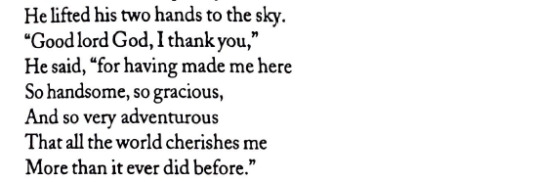
this is a 13th century version of this:

#arthurian legends#arthuriana#gawain#of course it's him#round table's most special boy according to everyone but thomas malory#talk talk talk#gella talks arthuriana#le chevalier aux deux épées
7 notes
·
View notes
Text

The first-in-class aircraft carrier USS Gerald R. Ford (CVN 78) steams in the Atlantic Ocean in formation with the German frigate FGS Hessen (F 221), Ticonderoga-class guided-missile cruiser USS Normandy (CG 60), Danish frigate HDMS Peter Willemoes (FFH 362), Canadian frigate HMCS Montreal (FFH 336), Arleigh Burke-class guided-missile destroyer USS Thomas Hudner (DDG 116), Spanish Armada frigate Álvaro de Bazán (F 101), Dutch frigate HNLMS De Zeven Provincien (F 802), French frigate FS Chevalier Paul (D 621), Nov. 7, 2022. Exercise Silent Wolverine is a U.S.-led, combined training exercise that tests Ford-class aircraft carrier capabilities through integrated high-end naval warfare scenarios alongside participating allies in the Eastern Atlantic Ocean. The Gerald R. Ford Carrier Strike Group is conducting their first deployment in the U.S. Naval Forces Europe area of operations. (U.S. Navy photo by Mass Communication Specialist 3rd Class Jacob Mattingly)
86 notes
·
View notes
Text




Nora & Chevalier ❤️
#mercato#mercato series#mercato edit#nora kader#thomas chevalier#chevalier x nora#nora x chevalier#nora and chevalier#chevalier and nora#norvalier#noravalier#noras#noralier#thoma#french side of tumblr#frenchedit#french serie#french show#french#manon azem#arnaud ducret
10 notes
·
View notes
Text
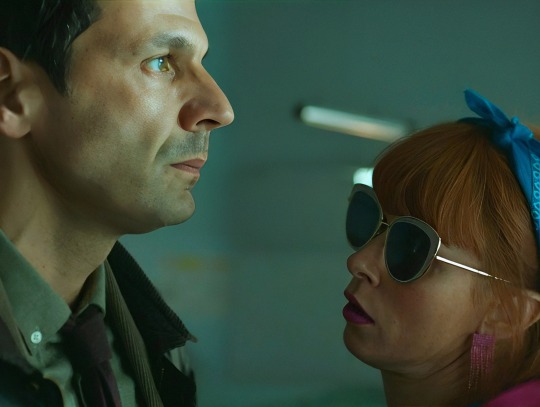
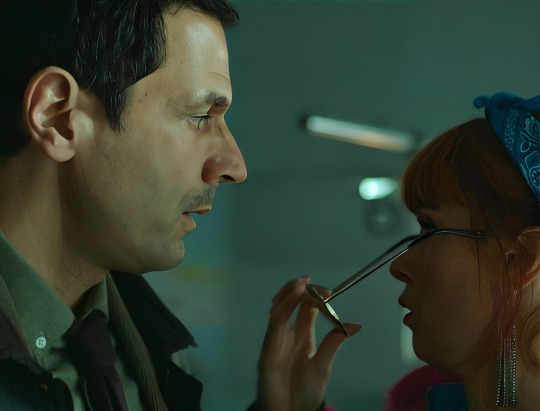


Same energy 🤭
#mercato#HPI#nora kader#morgane alvaro#norvalier#morgadec#thomas chevalier#adam karadec#nora and chevalier#chevalier and nora#nora x chevalier#chevalier x nora#morgane and karadec#karadec and morgane#morgane x karadec#karadec x morgane#hpi serie#hpi edit#mercato serie#mercato edit#french side of tumblr
7 notes
·
View notes
Text


First meeting - Nora x Chevalier - Mercato s01e01
#mercato#nora kader#thomas chevalier#chevalier x nora#french serie#mercato series#manon azem#nora x chevalier#noravalier#norvalier#french side of tumblr#french show#arnaud ducret#mercato tf1
5 notes
·
View notes
Text
Queer WWI Literature
This is a very niche and limited category, so I’ve been trying to throw together a list of what I can find out there for anyone else who might also be interested. What follows are all books that contain LGBTQ+ rep of any kind, that also involve the First World War as a central theme.
Titles with an asterisk* are the ones I have personally read, and would be more than happy to talk about/answer any questions about their content/rep!
Written in the 20th Century
Alf, by Bruno Vogel (1929)
Despised and Rejected, by Rose Allatini (pseud. A.T. Fitzroy) (1918)*
Lads: Love Poetry of the Trenches, edited by Martin Taylor (1989)
The Memorial, by Christopher Isherwood (1932)
My Father and Myself, by J.R. Ackerley (1968)
The Prisoners of War: A Play in Three Acts, by J.R. Ackerley (1925)*
The Regeneration Trilogy (Regeneration, The Eye in the Door, The Ghost Road), by Pat Barker (1991, 1993, 1995)*
A Scarlet Pansy, by Robert Scully (1932)*
Strange Meeting, by Susan Hill (1976)
Written in the 21st Century
The Absolutist, by John Boyne (2011)
Across Your Dreams, by Jay Lewis Taylor (2016)
Alec, by William di Canzio (2021)
Ashthorne, by April Yates (2022)
Awfully Glad, by Charlie Cochrane (2014)
Bonds of Earth, by G.N. Chevalier (2012)*
The Boy I Love, by Marion Husband (2005)*
The Daughters of Mars, Thomas Keneally (2012)
Eleventh Hour, by Elin Gregory (2016)
The Fallen Snow, by John J. Kelley (2012)
Fighting Proud: The Untold Story of the Gay Men Who Served in Two World Wars, by Stephen Bourne (2017) – (I know I said fiction, but I’m going to leave this one here anyhow)
Flower of Iowa, by Lance Ringel (2014)*
The Great Swindle, by Pierre Lemaitre (2013)*
The Indian Clerk, by David Leavitt (2007)
The Inheritance of Solomon Farthing, by Mary Paulson-Ellis (2019) *
In Memoriam, by Alice Winn (2023)
The Lie, by Helen Dunmore (2014)
The Paying Guests, by Sarah Waters (2014)
A Pride of Poppies, short story collection published by Manifold Press (2015)
Promises Made Under Fire, by Charlie Cochrane (2013)
The Shell House, by Linda Newbery (2002)*
Spectred Isle, by K.J. Charles (2017)
The Stranger’s Child, by Alan Hollinghurst (2011)
The Warm Hands of Ghosts, by Katherine Arden (2024)
Whistling in the Dark, by Tamara Allen (2008)*
Wild with All Regrets, by Emma Deards (2023)
The World and All that it Holds, by Aleksandar Hemon (2023)
This is a dynamic list, which I will continue to update whenever I find something new. If you know of anything that isn’t on this list and needs to be, please let me know!
#wwi#queer fiction#lgbtq books#queer lit#queer literature#lgbtq literature#historical fiction#booklr#book recs#queer wwi fiction#world war one#world war 1#the great war#lgbtq
780 notes
·
View notes
Text

«Rampike», Vol. 8, No. 2, Special Issue: 'Eclectic/Perspectives/Eclectiques', Edited by Karl Jirgens, Toronto, 1997 [UWindsor Institutional Repository, University of Windsor, Windsor. room 3o2 books, Ottawa]
Contributions by Ryosuke Cohen, Geza Perneczky, Artpool, K. Takeishi-Tateno, Anonymous, Serse Luigetti, Guillermo Deisler, Basil Johnston, Thomas King, Arthur (Butch) Elliot, Armand Garnet Ruffo, Kateri Akiwenze-Damm, Rolland Nadjiwon, Philippe Sollers, Rolland Sabatier, Hédi Bouraoui, Christine Germain, Betsy Warland, Gabor Gyukics, Helen Lovekin, William Knight, Paul Dutton, Jürgen O. Olbrich, Gerry Shikatani, Hank Lazer, Joan Chevalier, Christian Bök, Sheila Murphy, Robert Priest, Opal L. Nations, Genni Gunn, Stan Rogal, Oscar Martens, Gary Barwin, Doleske, John Barlow, Susan Andrews Grace, Aleksandrs Caks, Harry Rudolfs, Louise Bak, Joelli Ethier, Alan Lord, Phlip Arima, Jill Battson, Fernando Aguiar, Michael Londry, Kristjana Gunnars, Lisa Samuels, Brian David Johnston, Karl Jirgens, Laurie Kruk, Death Waits, George Angel
Cover Art by Ryosuke Cohen
#graphic design#typography#art#mail art#poetry#magazine#cover#magazine cover#rampike#karl jirgens#ryosuke cohen#uwindsor institutional repository#room 3o2 books#1990s
77 notes
·
View notes